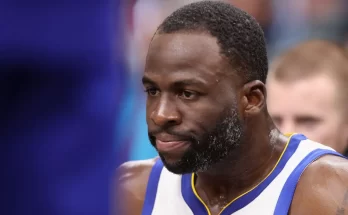The 2009 NBA Draft is often remembered for its top picks, such as Blake Griffin going first overall to the Los Angeles Clippers and standout prospects like James Harden and Tyreke Evans. But beneath the surface of those widely recognized moments lies a much richer, untold story—one filled with behind-the-scenes maneuvering, underrated players who would later emerge as stars, and pivotal choices that reshaped franchises in ways few anticipated at the time. The draft is more than a list of names and numbers; it’s a complex, strategic event where every selection carries consequences that ripple through the league for years.
One of the most significant yet less discussed aspects of the 2009 draft was the flurry of hidden trades executed quietly by front offices. The draft lottery had set the stage for a reshuffling of talent, and several teams worked aggressively to position themselves for key picks. The Clippers, holding the first overall pick, were set to select Blake Griffin, whose explosive athleticism made him a clear favorite. But the real drama played out in the middle and late first round, where teams jockeyed to grab players they believed could be foundational pieces.
The Phoenix Suns, for example, had their eyes on a couple of lesser-known players, but instead ended up trading down. This move was strategic, giving them multiple picks in the second round where they hoped to find diamonds in the rough. Their gamble was reflective of a broader theme in the 2009 draft—teams increasingly willing to sacrifice immediate impact for long-term potential, relying heavily on scouting and analytics that were becoming more advanced but still prone to misjudgments.
Meanwhile, the Minnesota Timberwolves had the fifth overall pick and selected Ricky Rubio, a promising young point guard from Spain. Rubio was seen as a risky choice at the time due to concerns about his adjustment to the NBA style and the language barrier. However, the Timberwolves saw something unique—a player with exceptional court vision and playmaking ability who could transform their offense. Rubio’s selection represented a growing trend of NBA teams looking internationally for talent, recognizing that global scouting was becoming essential in building competitive rosters.
However, Rubio’s immediate impact was delayed as he stayed in Europe for another year, highlighting another challenge teams faced during this period: balancing the promise of international prospects with the need for immediate contribution. This tension shaped many draft decisions, influencing whether teams picked established college stars or gambled on overseas players who might take time to develop.
While the top picks drew most of the media attention, several mid- and late-first-round selections quietly set the foundation for future success. James Harden, chosen third overall by the Oklahoma City Thunder, was initially overshadowed by Blake Griffin’s hype. Harden was seen as a skilled scorer but not necessarily a franchise-changing talent. His work ethic, however, and ability to adapt would eventually elevate him into one of the league’s premier players. The Thunder’s decision to draft Harden was a critical part of assembling a core that would later contend for championships, even though Harden’s eventual trade to the Houston Rockets would alter the trajectory of both franchises.
Tyreke Evans, picked fourth by the Sacramento Kings, came with high expectations after a stellar rookie season that earned him the Rookie of the Year award. Yet his career trajectory didn’t match the initial promise, highlighting the uncertainty and gamble inherent in the draft process. Evaluating character, injury risk, and off-court factors became increasingly important as teams realized that talent alone wasn’t enough to guarantee success.
The 2009 draft also featured several underappreciated players selected later who would become important contributors. For instance, Jeff Teague, picked 19th overall by the Atlanta Hawks, developed into a reliable starting point guard, known for his steady play and leadership. Similarly, Jrue Holiday, taken 17th by the Philadelphia 76ers, was initially overlooked by many analysts but evolved into a defensive stalwart and playmaker, contributing to multiple playoff runs with various teams.
One of the most fascinating hidden stories involves trades made on draft night that flew under the radar but had lasting implications. The Houston Rockets, for instance, acquired Aaron Brooks in a move that didn’t attract much attention at the time but added valuable depth to their backcourt. Meanwhile, the Golden State Warriors picked Stephen Curry with the seventh overall pick—a decision that was met with skepticism by some due to concerns about his size and defense. The Warriors’ faith in Curry would eventually revolutionize the NBA with the rise of the three-point revolution, underscoring how draft decisions can alter not only team fortunes but also the entire style of play across the league.
The 2009 NBA Draft also underscored the evolving role of analytics and scouting. While advanced metrics were still in their infancy, teams were beginning to incorporate data analysis alongside traditional scouting reports. This shift sometimes led to surprising choices and strategic trades designed to maximize value rather than simply selecting the most hyped player. However, the limitations of early analytics also meant some prospects were overvalued or undervalued, making the draft an imperfect science.
Behind the scenes, the draft was influenced by broader league trends and team philosophies. Some franchises prioritized immediate help to compete in the short term, while others focused on building through youth and potential. The draft reflected the tension between competing visions for success, and the results were often unpredictable. A team’s ability to develop talent post-draft, provide the right coaching, and create a supportive environment was just as critical as the actual selection.
The 2009 NBA Draft also had a human element often overlooked in the retellings. For many players, it was the culmination of lifelong dreams and sacrifices. The uncertainty, pressure, and hope experienced on draft night are profound. Some players, like Griffin and Harden, were thrust into the spotlight immediately, while others had to fight for recognition and minutes. The emotional highs and lows shaped careers in ways statistics can’t fully capture.
In hindsight, the 2009 NBA Draft stands as a turning point in NBA history. It marked a period when scouting was becoming more global, analytics were starting to influence decisions, and the league was on the cusp of a strategic evolution. The decisions made that night reverberated for years, influencing team compositions, playing styles, and championship outcomes. What appeared on the surface as just another draft class was actually a complex tapestry of calculated risks, hidden maneuvers, and evolving philosophies.
In conclusion, the untold story of the 2009 NBA Draft lies not in the obvious picks or the headlines of the time but in the subtle, strategic decisions, overlooked players, and behind-the-scenes trades that collectively reshaped the NBA landscape. Understanding this draft in its full context reveals the intricacies of team-building and player development, reminding us that every draft pick carries a story far richer than the number next to a name.


